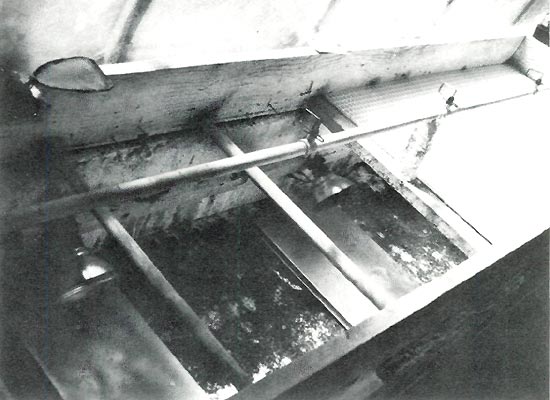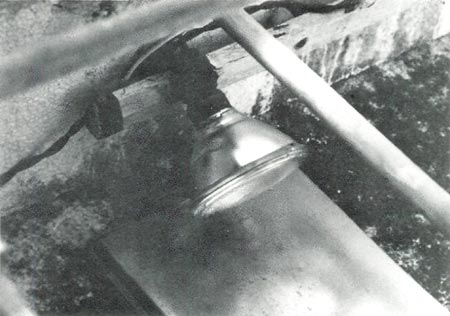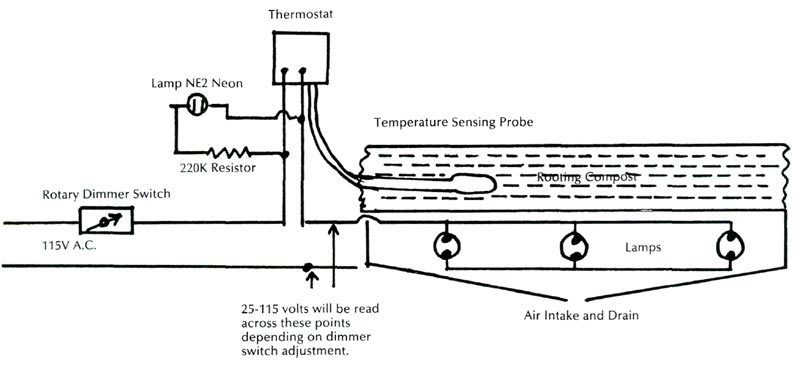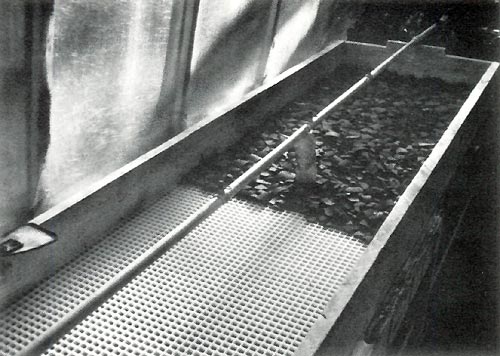JARS v41n2 - The Lofthouse Propagator - A 1987 Update
The Lofthouse Propagator - A 1987 Update
John G. Lofthouse
Vancouver, Canada
When I was a boy, helping my father with chores in the garden, he'd tell me that plant cuttings, placed around the edges of clay pots, rooted faster, and produced better roots than cuttings placed in the center. This ease of rooting was because of the extra air entering the compost through the porous sides of the pot. Later as an adult, I designed a propagator to take advantage of this concept, and this design really worked! My article on this "Closed Case Propagator" appeared in the ARS Quarterly Bulletin of April 1970.
As most articles go, mine included, they are written, published, read, and forgotten by the public and the author alike. And life goes on... But apparently a number of these units were built with good results. People kept telling me about their successes ten, fifteen, and more years later. At a plant propagator's convention a few years ago, a delegate told me that building his first unit actually changed his life. He enjoyed propagation, built more units, eventually quit his mundane job and made horticulture his vocation. He and his family started a nursery!
Dr. Richard Chaikin of Boston wrote me in 1985 that Leo Blanchette, an area nurseryman who had built this propagator, addressed the Massachusetts Chapter on its use. Because of his chapter's interest, Dr. Chaikin asked me to write an updated version for the "Rosebay" newsletter. I gave him an outline of the changes at that time, and promised him more in an ARS Journal article at a later date. Robert Service said in his famous poem, The Cremation of Sam Magee , "A promise made, is a debt unpaid." So here is the update!
A brief description of the propagator described in the 1970 article will help you to understand the modifications. A box six feet long, two feet wide, and 14" high, was constructed, with no top, from ¾" waterproof plywood. The unit was properly braced several inches from the bottom to support a ¼" wire screen that would be covered by 6" to 8" of a porous rooting compost. (Air enters from the base and circulates up through the compost in this design.) A plastic sheet covers the unit to increase humidity. A few holes were left at the top of the box for air circulation. Plywood was placed over the bottom, slanted for drainage. A small slot for air intake and drainage was provided at the lowest level. The unit was then finished and waterproofed.

|
|
The Lofthouse Propagator open for maintenance. Air enters chamber
in a slot under metal reflector in center. Water also drains through this slot. Three lamps heat area beneath compost. Two lamps can be seen. A third lamp is under plastic grill. Pipe through center provides water for mist system. The "electronic leaf", a delicately balanced switch, turns misting on and off as required. Photo by John G. Lofthouse |
Though no building details are given here, the described design will allow persons handy with tools to build a unit that has rooted many thousands of rhododendrons. Individuals could size the unit to fit their needs. Fluorescent tubes could provide illumination in house or garage. Natural light can be used, if outside or in the greenhouse.
I have made several modifications to my unit. First - for increased safety, better heat control, and convenience, I have eliminated the soil cable. Secondly - because of the need to propagate all year, I have installed mist.
In my experience, the cheaper soil cables are a fire hazard. I refer particularly to cables not enclosed in metal. Arching inside the cable can cause dry compost to ignite. Fires in the Vancouver area have been attributed to defective soil cables. Other disadvantages are that unless watered carefully and often, the compost dries adjacent to the cable. This insulates, and stops proper heating, resulting in the compost temperature varying considerably. The other major problem is that if the cable burns out, cuttings and compost have to be removed - sometimes at a most inappropriate time!

|
|
Close up of lamp mounting and positioning. A plastic
grill and the rooting compost cover this area when in use. Photo by John G. Lofthouse |
As an alternative to soil cables I use Pyrex lamps placed in a chamber under the media. (See illustrations.) The lamps, mounted in waterproof sockets, are pointed downward so water won't collect in the sockets. The lamps' heat and radiation, reflected from metal reflectors, warms the air, resulting in even compost temperature. The lamps are operated at low voltages, controlled by an ordinary rotary, dimmer switch. This allows the lamps to last many times their normal life. When they do burn out, they can be replaced through removable panels left for this purpose. The overall temperature of the compost is controlled by a standard capillary tube thermostat. (See electrical diagram.) Although Pyrex heat lamps could probably be used, I use 150 watt outside spotlights. Cold water will not affect their operation.

|
|
Compost heating in the Lofthouse Propagator. Air enters through the air intake opening, is heated by the 115V.
150 watt Pyrex spot or flood lights and circulates under the rooting compost. A ¼” screen separates the compost from the heated air chamber below. The NE2 neon lamp with 220K resistor can be installed if desired. Lamp will glow when thermostat cuts voltage off to heat lamps. Parts can be obtained at Radio Shack. |
The change to mist, as stated before, allows me to propagate every month of the year. Generally summer is too hot for "closed case" propagation. One other change is the elimination of the ¼" wire screen that was used to support the compost. This was quickly eroded by electrolysis. Pieces of rigid plastic material in grids of ¼" squares, not affected by electrolysis, are available in building supply stores.

|
|
Propagator almost ready for the rooting compost. Broken chips
from clay pots are applied over the grill to prevent compost from going through screen. Compost used is 50% peat and 50% perlite or Styrofoam, or a mixture of both to suit personal requirements. Photo by John G. Lofthouse |
The constant leaching of media by mist systems often requires different applications of rooting hormones. Hard to root varieties sometimes require applications of both liquid and powder hormones for best results. Liquids give quick results, but are of limited duration. Powders are slower, but the effects last longer. Rooting results vary with the time of year cuttings are taken. For example, for me, November to February cuttings root faster than those of August and September.
If cuttings have not rooted in 90 days, I take a ¼" slice of bark above the original wound. I then brush on full strength liquid I.B.A. at 8000 P.P.M. (a similar liquid hormone would do.) This method generally produces roots in a short time. Of course, I only do this to material in good condition. Heavily callused and dead material is removed at this time.
Anyone undertaking electrical changes similar to that I have described, must sure to take safety precautions against electrical leakages that might cause electric shocks. Wiring should be approved up to local electrical safety codes.
Mr. Lofthouse, a long time member of the Vancouver Chapter, is well known for his success in propagating rhododendrons.
